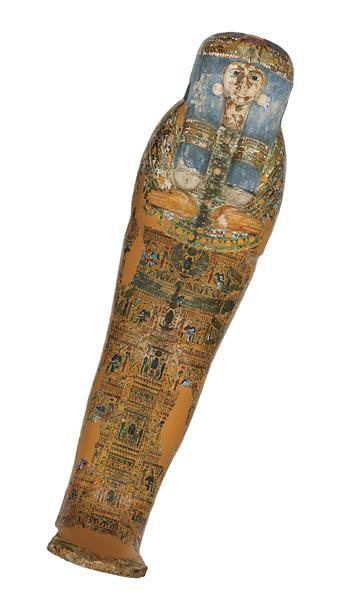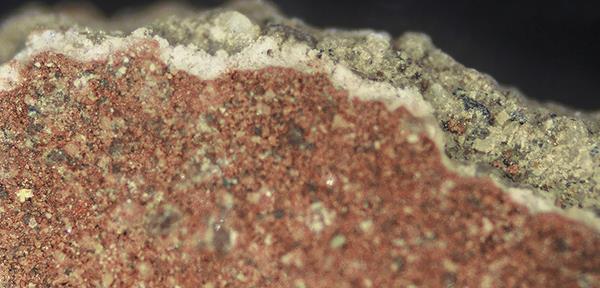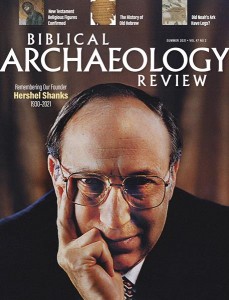
The hieroglyphic inscription on the coffin identifies the deceased as a woman named Meruah, while DNA analysis suggests the mummified individual is a man who lived centuries before the coffin was made.a But the mummy in question harbors an even more intriguing mystery.
Recent CT scans of a mummy in the Nicholson Collection of the Chau Chak Wing Museum, at the University of Sydney, revealed a restoration performed on the body already in antiquity. Researchers discovered that the corpse is fully sheathed in a mud shell or carapace, a treatment not known or previously documented with any Egyptian mummy. Hidden between layers of linen used to wrap the body, the carapace is up to an inch thick and consists of three layers: a thin base layer of mud or clay, a white calcite-based pigment, and a red-painted surface of mixed composition.

The muddy substance was a applied to mitigate postmortem damage to the body that likely occurred within one or two generations after the initial burial, possibly during a tomb robbery. The restorative treatment was meant to enable the deceased’s continued existence in the afterlife. It also was possibly used as an alternative to resin carapaces, which were much pricier and are well documented with the 19th- and 20th-Dynasty mummies of royals and nobility.
Already a library member? Log in here.
Institution user? Log in with your IP address.

